The teide, what kind of volcano is it?
It is considered the largest and most important natural monument in the Canary Islands and the third highest volcano in the world. Mount Teide went from being a simple volcano to being the representation of Canarian nature and culture.
This Teide volcano located on the island of Tenerife in the Canary Islands, dates its last eruption in 1798, known as the "eruption of the Noses of Teide".
Mount Teide makes Tenerife the tenth highest island in the world and turns the place into a tourist complex where every year thousands of visitors enjoy this wonderful peak that hides a whole cultural and geological history.
Many people will wonder where it is located, what it is surrounded by, what has been its last activity, what type of volcano it is and what you can find in the national park. All this history you will know in this article where we will tell you all about the Teide Tenerife volcano.

What is the Volcano of Teide
Mount Teide is a volcano located on the island of Tenerife in the Canary Islands. This volcano, due to its large size, corresponds to a large extension of the entire island and is a representative site of it at a tourist and cultural level.
This feature (its size) makes it the third largest volcano in the world, after the Mauna Loa and Mauna Kea volcanoes, located on the island of Hawaii.
But, although it is now only the third largest volcano, thousands of years ago it was only part of a much larger volcanic building, which after its landslide approximately 170,000 years ago left Mount Teide uncovered.
Its antiquity has made Mount Teide have a cultural significance for the Canary Islands, forming part of a legend that says that, inside is locked Guayota, the king of evil, who was imprisoned by Achamán after freeing Magec (god of the sun).
The white peak of Mount Teide is, according to Guanches beliefs, the plug that Achamán placed on the volcano so that Guayota would not escape. Thus, over the years it has been part of cultural histories and an indisputable representation of the culture of the island.
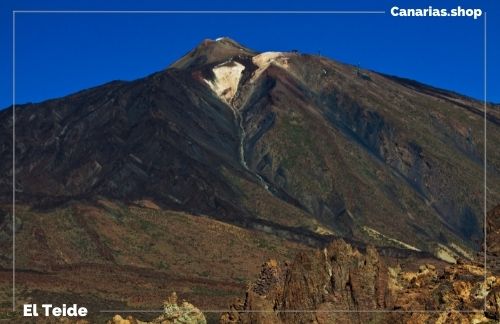
Where it is located
The Teide is located on the island of Tenerife, Spain, part of the Canary archipelago, not by chance, the largest of the seven islands that is located between La Gran Canaria, La Gomera and La Palma, located 300 Kms.
The Teide volcano is located in the center of the island of Tenerife, in the province of Santa Cruz de Tenerife, covering the municipalities of Icod de los Vinos, Guía de Isora and Santiago del Teide.
Its exact height is 3715 meters above sea level and has a height of 7.5 km above the ocean floor. This height makes it one of the largest volcanoes worldwide and makes Tenerife the tenth highest island in the world.
The Teide-Pico Viejo complex is a natural monument recognized by UNESCO, which you can access very easily and enjoy a guided walk around the powerful volcano that has been dormant since 1798.
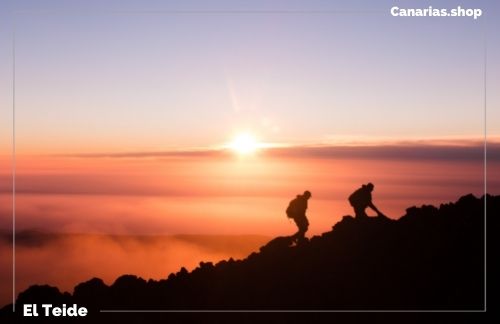
How was teide formed?
Interestingly, the Teide volcano has a wonderful geological history that is not separated from what is now the entire island of Tenerife and the distribution of the geographical space of it, which is the result of the entire evolutionary process even before the first eruption of Mount Teide.
Result of progressive geological processes that shaped what is now the third largest volcano in the world.
In canarias shop you can find a unique collection of jewelry pieces in lava
This process had a period of approximately 40,000 years which for experts is actually a very short period, compared to other volcanoes.
The volcano's first eruption is dated to have arisen 170,000 years ago, as a result of a geological landslide of a much larger volcanic building from the north of the island to the sea. The space left by this landslide was filled by different geological materials forming the volcano.
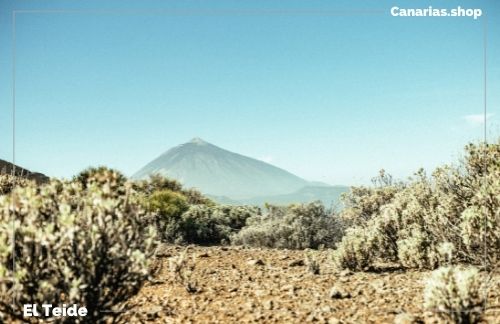
What it is made of
Geological studies over the years have allowed scientists to discover the evolution that led to the formation of Mount Teide.
In this process of geological landslide that turned a large volcanic building called Cañadas III 150,000 years ago into what is now known as the Caldera de las cañadas, the spaces or scars left by the different landslides were filled by geological materials.
Currently it has been discovered that these remains are composed mainly of volcanic stones of basaltic type, and by other materials called salic where the so-called trachytes and phonolites appear.
Another of the materials that can be observed on the surface of the volcano is pumice stone also known as "zahorra". In ancient times the Guanches extracted obsidian, which is a rock whose composition resembles black glass and that they used to make weapons and hunting instruments.
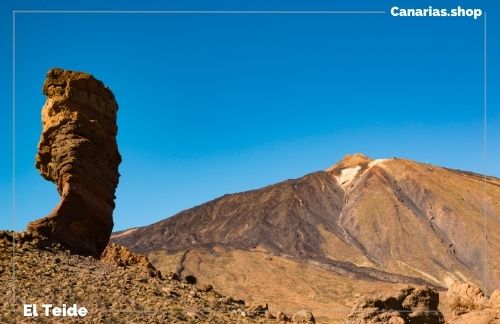
When has it been active?
The activity of Mount Teide is a topic that arouses the curiosity of both experts and people in general, since the time that this volcano has entered into activity has been surprising and different from each other.
To understand the behavior of this volcano it is necessary to know that the volcanic manifestations or eruptive mechanisms that have occurred over time are both effusive and explosive.
The first explosive lavas are recorded from 180,000 years ago, which shaped what is now the Volcano of Teide. Subsequently, studies of pumice on the surface of the volcano show that there was another eruption about 2000 years ago.
In canarias shop you can find a unique collection of jewelry pieces in lava
Its last eruption was of an effusive type without explosive manifestations and occurred in 1909, this indicates that Teide is in what is called "latent phase". This means that, although there is currently no eruption, it is almost 100% possible that the volcano is active internally, since one of the criteria is that it has erupted in the last 10 thousand years.
Now, this raises the question of whether it will erupt and how it will be present for the authorities given that only 100 years ago it was its last recorded eruptive activity.
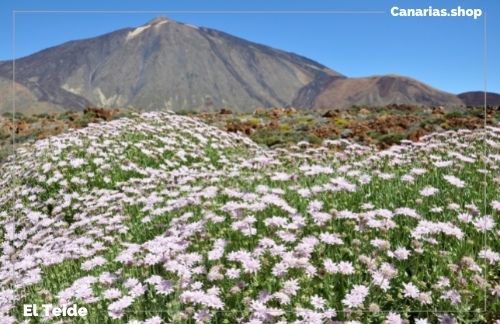
Flora and Fauna of Teide
The Teide has a very special plant formation that is shown throughout the walk through Las Cañadas. The retamar-codesar is the predominant vegetal form in this surface, being the brooms of the Teide and the codeso of summit the protagonists of this landscape.
In addition to this there are more than 194 different plants, 58 of them considered endemic plants of the island.
On the other hand, within the fauna the species that stand out are the blue finch, representative of the Canary Islands, the blight lizard, the hoopoe, the crow, the hawks and other birds such as the little owl.

Teide, the national park
In the volcano of Teide and its adjacencies, is the Teide National Park. This was declared a national park on January 22, 1954, and later in 2007, a World Heritage Site by Unesco.
It is a place where you can enjoy a guided family walk and get to know the surface and natural virtues of one of the highest volcanoes in the world.
